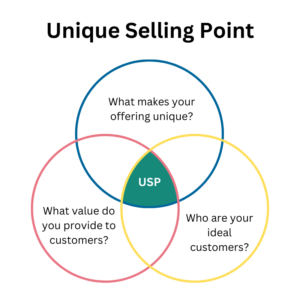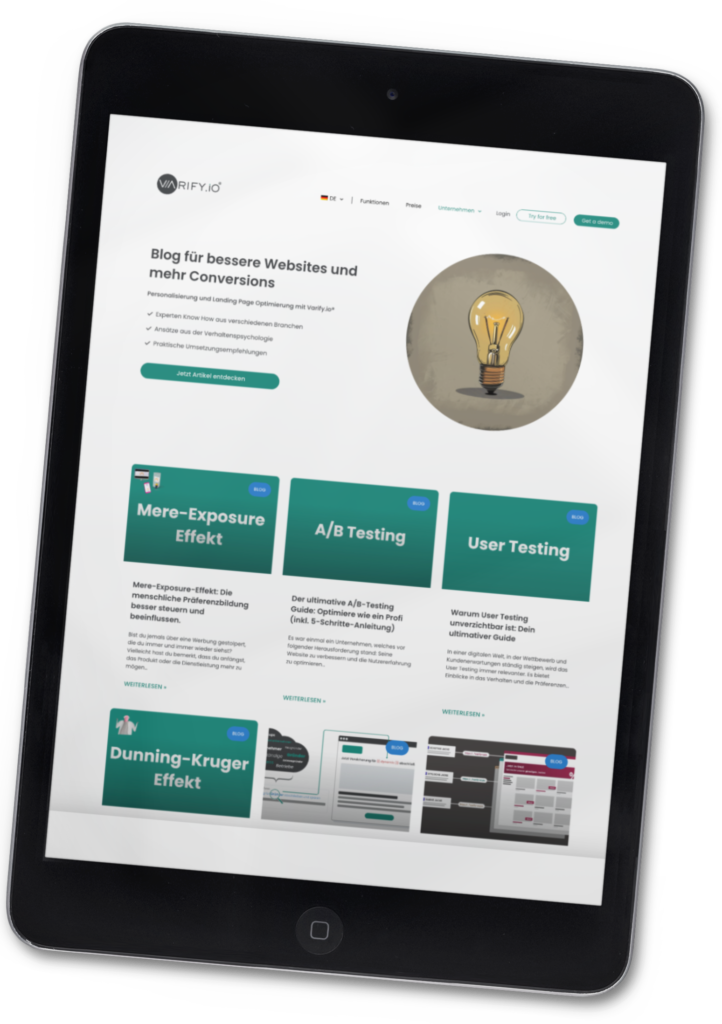When everything seems comparable, what counts is what is unique. This is exactly where it is decided who becomes visible and who disappears from the market. Products are similar, services are quickly copied, offers seem interchangeable. Without a clear unique selling point, even the best concept remains invisible.
A convincing value proposition that precisely formulates why an offer is relevant and for whom is not a luxury. It is the basis of strategic brand management. The term USP (Unique Selling Proposition) is frequently used, but often misunderstood. Many supposed unique selling propositions are nothing more than generic phrases.

Table of contents
USP: Unique Selling Proposition and Unique Selling Point
The terms Unique Selling Proposition and Unique Selling Point mean exactly the same thing. Both describe a specific value proposition that distinguishes an offer from comparable offers and makes it particularly relevant for a specific target group.
USP is the common abbreviation for this. It often features prominently in strategy papers, pitch decks and agency briefings. However, just because the abbreviation is used does not mean that there is a real competitive advantage. A USP must be tangible, credible and tangibly relevant for the target group, otherwise it remains an empty label.
What is a unique selling proposition really?
A unique selling proposition is not just a nice claim or a phrase for the shop window. It is a strategic promise. It defines the specific added value an offer provides for a defined target group and why exactly this added value is unique from the competition.
This clearly distinguishes a truly unique selling point from related terms:
- Slogan: a pithy advertising slogan, often emotional but rarely substantive
- Positioning: the superior position a brand wants to occupy in the market
- Elevator pitch: a compact presentation of a business model or idea
- USP: the operational value proposition, the unique selling proposition in the narrower sense
Particularly in saturated markets, a precise USP determines whether an offer is perceived as relevant or whether it gets lost in the shuffle. Price, quality and service alone are no longer enough. The decisive question is: Why should someone choose this particular offer and not another?
A strong unique selling proposition provides a clear answer to this. It not only positions the product, but also gives the entire communication direction and substance.

What functions does a USP fulfill?
A genuine unique selling proposition fulfills more than just a communicative purpose. It works on three levels: externally, internally and in competition.
Orientation for potential customers
A clearly formulated USP creates immediate clarity. It answers the question: What exactly do I get here and why is it relevant for me?
In markets full of options, a precise value proposition helps to attract attention and build trust. Especially when it addresses specific problems or offers tangible added value.
Inward focus
A USP is also a strategic filter. It helps with product decisions, prioritization and internal coordination. If you know exactly where your advantage lies, you won't get lost in side issues.
Marketing, sales and product development all benefit when the value proposition is clearly defined and anchored in the company.
Differentiation in competition
In markets with interchangeable offerings, differentiation becomes a question of survival. A USP not only shows what a company offers, but also how it differs from the rest.
The prerequisite: the difference must be relevant, credible and, ideally, difficult to copy. Otherwise, the unique selling proposition remains an empty promise.
What types of USPs are there?
Not every USP arises from the product itself. There are different starting points, depending on where the relevant difference lies. Here are four central types with real examples that carry precisely this USP:
Product advantage
Brand: Dyson
Dyson doesn't sell vacuum cleaners, it sells technology. Cyclone technology was the first real innovative leap in a dusty industry. The product is technically superior, visibly different and verifiably fulfills the claim "better vacuuming without a bag".
USP: Patented technology that is functionally better than the standard.
Product advantage
Brand: Amazon Prime
It's not the product range that counts, but the promise: delivered tomorrow, at no extra cost. With Prime, Amazon has redefined the service and turned it into an expectation that has changed the entire e-commerce industry.
USP: Reliable speed and convenience for frequent customers.
Service advantage
Brand: Aldi
Aldi does not sell an attitude to life, but consistently saves on staging - and passes these savings on directly to the customer. The pricing model is radically simple and maximally consistent.
USP: Low prices through uncompromising efficiency throughout the entire business model.
Product advantage
Brand: N26
The digital bank without a branch has completely rethought the concept of an account. Mobile first, intuitive operation, transparent fees. N26 has removed banking from the logic of traditional banks and radically simplified it for a new target group.
USP: Mobile banking as a product and attitude in one.
A strong USP is based on a real difference, not on cosmetic details. The decisive factor is that this difference is tangibly relevant for the target group and clearly stands out in the market.
How to develop your USP
A USP is not created on a whiteboard, but at the interface between the market, target group and your own potential. If you want to clearly differentiate yourself, you need more than just good ideas. A structured approach with a real focus is crucial.
Step 1: Understanding the target group
It doesn't start with the offer, but with the question of who it is intended for. And more importantly: why should someone really want it? The decisive factor is not demographic data, but specific needs, problems and expectations.
What helps: Discussions with customers, observation of actual use, evaluation of feedback. With the value proposition canvas, benefits, pain points and goals can be visualized in a structured way.
Central question: What problem is being solved and why is it relevant?
Step 2: Analyze competition
A strong value proposition needs contrast. If you use the same arguments as everyone else, you will remain interchangeable. Relevance arises where something is missing or is thought better than usual in the market.
What helps: Comparison with competitors, analysis of brand messages, simple positioning grids. The aim is not to be better everywhere, but to be different where it counts.
Central question: What do others say and what is nobody saying yet?
Step 3: Specify your own strengths
What is considered an advantage internally often seems meaningless to customers. It is important to translate the benefits into everyday language. No technical jargon, no glossing over. But tangible results.
What helps: plain language. You must be able to prove what you promise. The best way to do this is with comprehensible statements, concrete examples or direct evidence.
Key question: What advantage is created and is it really visible?
Step 4: Create focus
A unique selling proposition is not a list. It is a decision. Those who want to say everything at the same time remain unclear. Those who concentrate on one message will be understood.
What helps: Test, shorten and sharpen statements. Say less, but say the right things. Then the difference is not only claimed, but also recognized.
Central question: Could someone explain your offer in one sentence?
A strong USP is not an assertion. It is the result of precise observation, honest analysis and clear communication. Only when target group, market and own profile fit together does it become a real difference.
Does it always have to be a USP?
A clear USP can be helpful, but is not always essential. Brands with a strong emotional profile in particular do not rely on a single value proposition, but on attitude, values or experiences. Patagonia is not convincing through functions, but through responsibility. Customers don't just buy products here, they buy conviction.
The concept of onlyness also shows: The difference is not always in the offer, but in the person or perspective behind it. For solo providers or creative service providers, this is often more effective than any classic benefit proposition.
It is not the wording that is important, but the clarity. Whether USP, story or attitude, the decisive factor is that the offer is perceived as relevant and is remembered.
Conclusion and checklist
A unique selling proposition is more than just a good argument. It is the essence of what makes an offer relevant and distinctive. Understanding what your target group really needs and what makes you different creates orientation, trust and recognizability.
The following questions will help you to sharpen or develop your USP:
Checklist:
- Is it clear which specific problem is being solved?
- Is there a recognizable difference to the competition?
- Is the benefit formulated from the perspective of the target group?
- Can the promise be substantiated?
- Can it be expressed clearly in a single sentence?
- Would anyone voluntarily talk about it?

